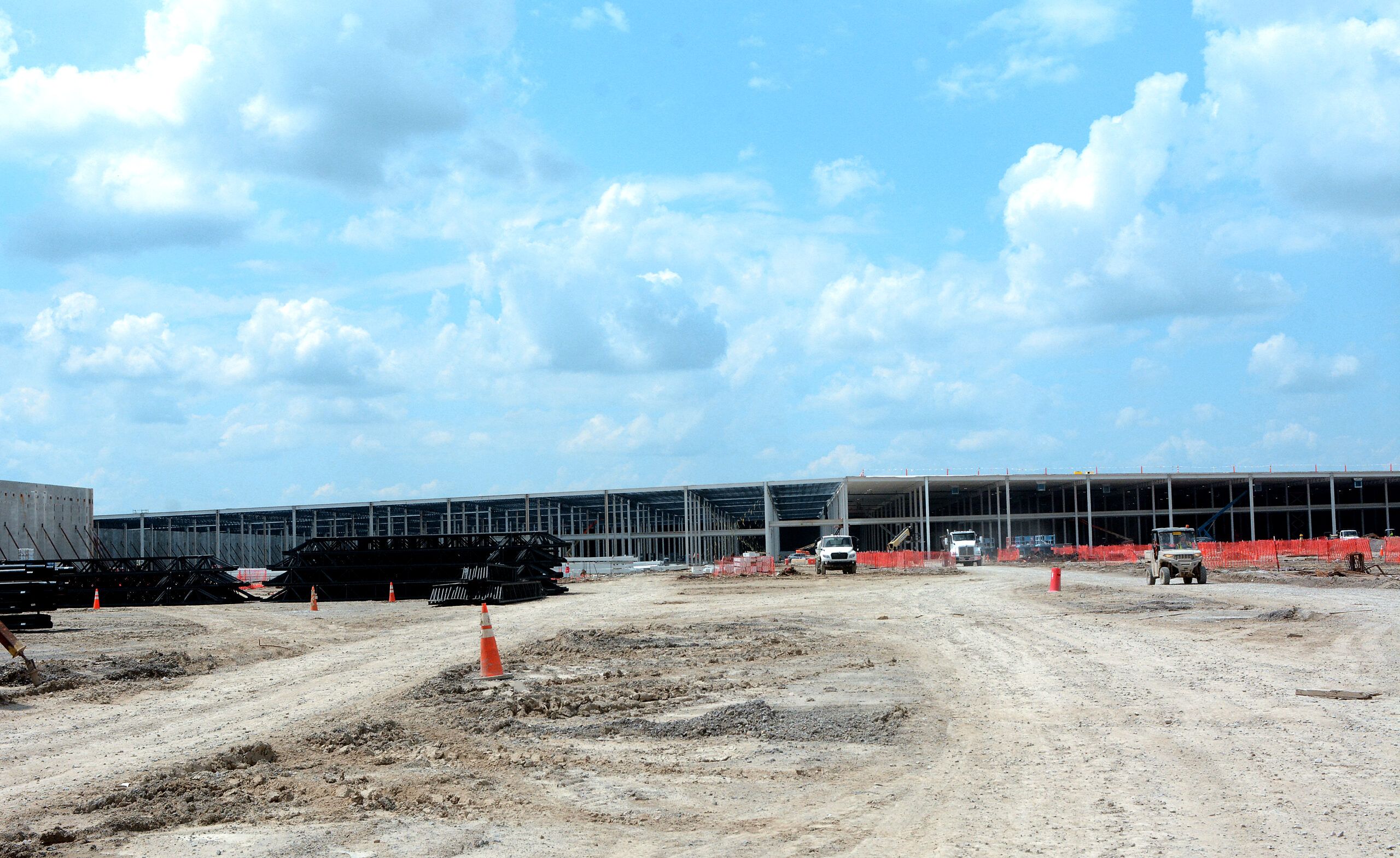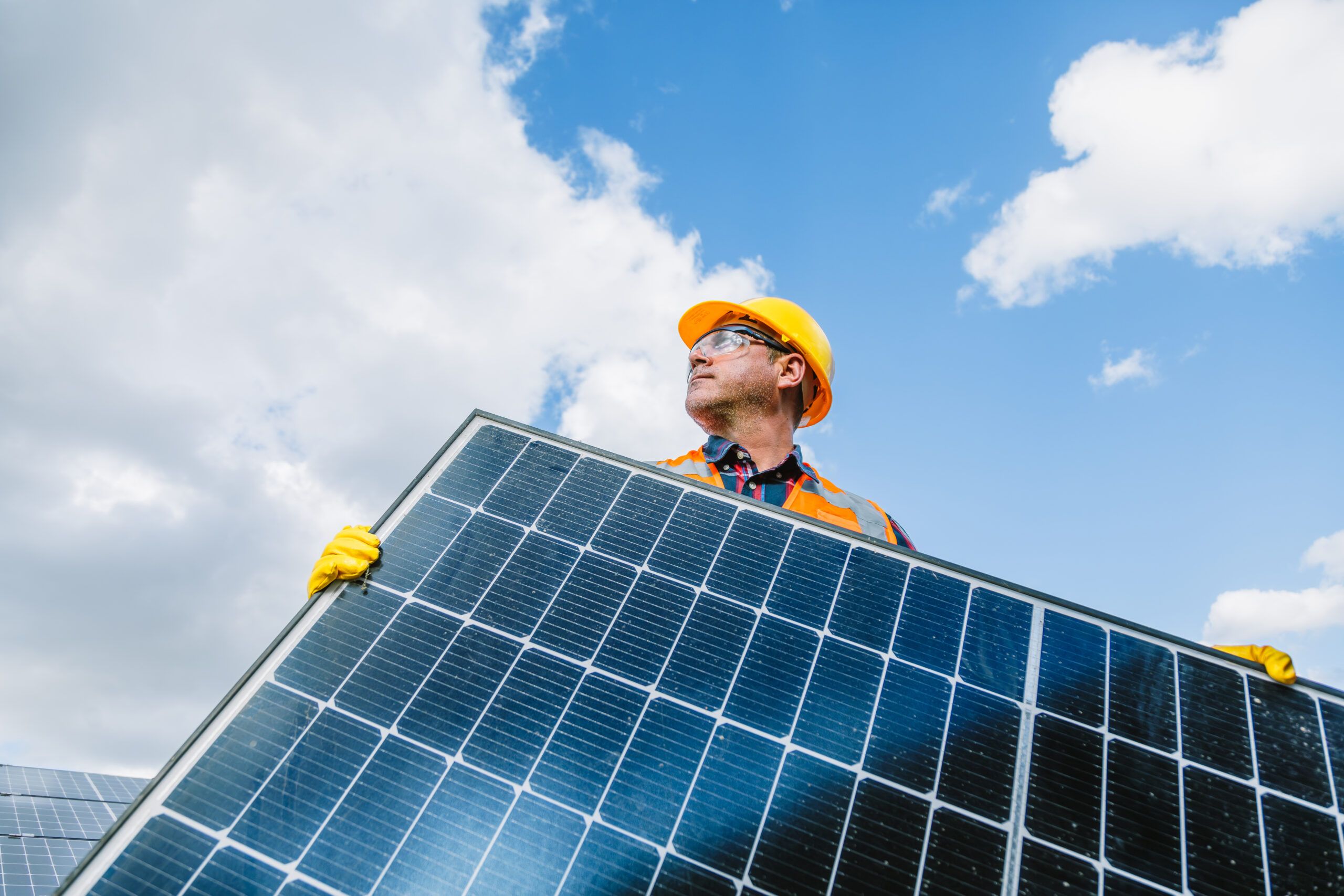Louisiana’s multipronged push toward industrial- and utility-scale solar is making big waves
November 1, 2024
First Solar’s Georges Antoun can hardly contain his excitement about the future of the state’s solar energy market.
What began as a trickle could soon become a tidal wave of new investment, and his photovoltaic solar panel manufacturing facility will take the lead as the industry’s biggest employer when it begins operating in New Iberia next year.
Antoun, the company’s chief commercial officer, hopes to dispel a common misconception about the solar industry–that it’s not a job creator. As evidence to the contrary, he points to the more than 700 employees who will be working at his New Iberia facility once it’s fully operational at the end of 2025.
The massive $1.1 billion, 2.4-million-square foot manufacturing facility will be capable of churning out more than a dozen panels per minute, with some 120 trucks coming in and out of the facility every day. “It’s wrong to say you don’t like solar because it creates fewer jobs than an oil rig,” Antoun says. “The University of Louisiana at Lafayette released a study that said for every direct job the factory brings, it will create 7.5 indirect or induced jobs.


“And any time you put in a manufacturing facility, you have suppliers who build around you,” he adds. Case in point: Ice Industries, an industrial manufacturer and supplier, recently announced that it will invest $6 million to build a new production facility in southwest Louisiana that will “roll form” steel back rails for First Solar’s panels.
What’s happening in New Iberia is not an anomaly. Across the state, dozens of solar projects are at varying phases of development, and energy providers, private developers and the industrial sector are all gunning for more solar development as they look for practical ways to achieve renewable energy and net-zero goals.
Developers are taking advantage of funding from the Inflation Reduction Act to add solar projects across the U.S. at a record pace. Installed solar capacity has grown 34% since Q2 2023, with more than 110,000 MW of projects now operating. Additionally, nearly 233,000 MW additional solar capacity is in development in the U.S. through 2028, according to Market Intelligence data.
Antoun expects that Louisiana will become a strong player in the market, as its existing workforce can easily transition to the manufacturing space. “That’s a large part of the reason that we’re locating here,” he says. “We found that oil and gas skills easily transfer to the manufacturing side.
“As a state, we need to diversify and create resiliency so that we’re not on an up and down five-year cycle dependent upon one industry,” Antoun adds. “Also, without renewables in the state you’re not going to attract the data centers or the AI companies because they all want to be served by renewables.”
A Surprising Advocate
In recent years, the petrochemical industry has become a surprising bedfellow in the advancement of solar power. Frustrated by the pace of renewable energy adoption by local energy providers such as Entergy, the Louisiana Energy Users Group, or LEUG, a decades-old coalition of industrial companies, received approval from the Louisiana Public Service Commission in June to begin investing in their own solar farms.
It’s a necessary move, the owners say, as it will enable them to more swiftly achieve their own net-zero goals. LEUG’s membership includes companies such as Dow Chemical, Chevron, Air Products, Georgia-Pacific, ExxonMobil, Honeywell, Monsanto, Nucor Steel, Phillips 66, CF Industries and BASF, among others.
Initially, they’ll be allowed to create their own source of renewable energy, but the energy still must traverse Entergy’s transmission lines and will be capped at 500 megawatts, ensuring they remain dependent on the utility. LEUG companies hope to eventually be allowed to bypass Entergy altogether, although that was not part of the recent LPSC decision.
The move marks a pivotal point for utility regulation in a state that has long enabled a single company to dominate most of the market for the supply and transmission of electricity. LEUG first brought the plan to the commission in 2019.


“Industry has been asking for renewable power and the need to access renewable power for more than four years,” said LEUG spokesman Randy Young, a partner with Kean Miller in Baton Rouge, during the June meeting. “Four years fast-forward … Entergy has 50 MW of solar on the ground. That’s all they have.”
While Entergy has other solar investments in varying stages of development, the pace has been too slow for LEUG’s member companies, each of whom has its own corporate goals for using renewable energy sources.
Young said by investing in their own energy sources, his member companies will be able to create more “price certainty” when purchasing energy.
“Secondly, they’ll know how much volume they’re going to get and how many renewable energy credits they’re going to get,” Young said in the meeting. “This allows them to create that certainty in terms of the price, the volume and the renewable energy credits.
“We hope that Entergy’s projects and programs are successful, but this creates another option for those industrial companies that need to do something today.”
In May, the LPSC approved an Entergy proposal to add up to 3 GW of solar power to its generation portfolio, marking the largest renewable power expansion in state history.
The approval authorized a streamlined procurement and approval process that will enable the construction of several solar resources within the state.
The initiative aligns with Entergy’s plans to grow its renewable energy resources by 2031 and its commitment to achieving net-zero carbon emissions by 2050.
Today, nearly 25% of Entergy Louisiana’s generation portfolio comes from carbon-free resources, including nuclear and renewable technologies.


‘Big Picture’ Vision
UL Lafayette has emerged as the undisputed local leader in the solar arena, buoyed in part by the success of its 1.1 MW outdoor Louisiana Solar Energy Lab.
Terrence Chambers, director of the lab and a mechanical engineering professor at the university, says the six-year-old research and training facility is one of the largest and best equipped in the southeastern U.S. and is what initially attracted First Solar to the area.
And in 2023, the university received a $1 million U. S. Department of Energy grant to jump start the “Louisiana Solar Corps,” a statewide solar energy workforce training program with a focus on underrepresented communities.
Through the program, Chambers and others are helping technical and community colleges such as South Louisiana Community College and River Parishes Community College to establish their own solar training programs by developing curricula and training faculty.
They recently conducted a week-long training course for the faculty of RPCC. “They now have their own solar training program,” Chambers says. “That’s the kind of thing we’re doing to help grow the programs across the state and, in turn, enable the solar industry to grow.”
UL Lafayette is also propping up an Advanced Manufacturing Laboratory on campus that will train the bulk of the workers needed by First Solar. Dr. Jonathan Raush, director of the Institute for Materials Research & Innovation, will oversee the facility, which is funded in part by a $40 million donation from First Solar.
“The training will be specific to the processes used at the factory,” Chambers says. “Most of them will go through our facility for training prior to being hired.”
Once operational, the Advanced Manufacturing Lab will provide a sustainable source of training for the manufacturer.
In the meantime, First Solar is sending workers to its other facilities in Alabama and Ohio for on-the-job training. “As workers move on, change jobs, etcetera, we’ll need to sustain that workforce and the university has committed to helping us with that,” Antoun says.
But the university’s plans for the lab extend far beyond the solar industry.
“The processes you use to make solar panels are almost identical to the ones used to make computer chips,” Chambers says, “so our long-range vision is for it to be used for semi-conductor manufacturing, with the goal of building a semi-conductor industry in Louisiana.”
First Solar’s Antoun has his own “big picture” view. With significant growth expected in local solar demand, he hopes to create a vibrant and healthy customer base in Louisiana and across the Gulf South.
At present, about 95% of First Solar’s customers are developers and utility companies.
“We’re hoping that most of these guys are going to buy First Solar panels, not Chinese,” he says. “We’re differentiated from other manufacturers because we’re close. We’re hoping all these modules we produce will go to Louisiana projects, as well as to Texas, Mississippi, Alabama and Florida.”
Another item on Antoun’s wish list: that the state will incentivize the process by encouraging the developers of local solar projects to use locally-based manufacturers. “I believe the current administration is looking into the potential of that.”
Search
RECENT PRESS RELEASES
Related Post




